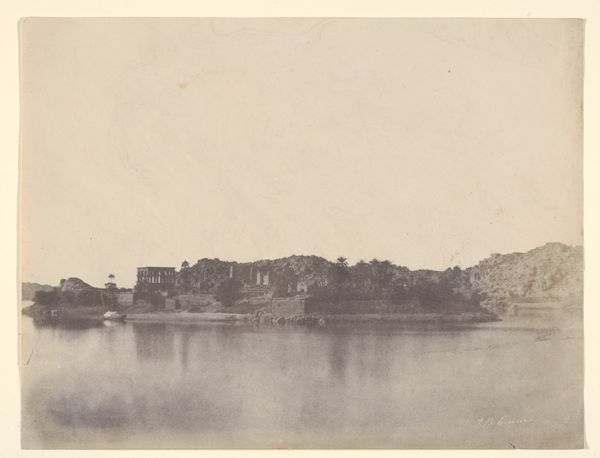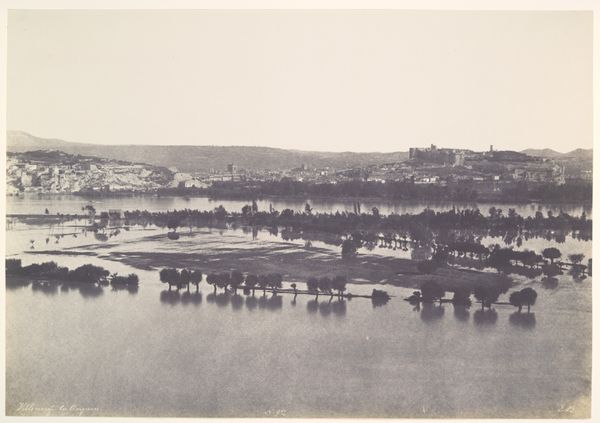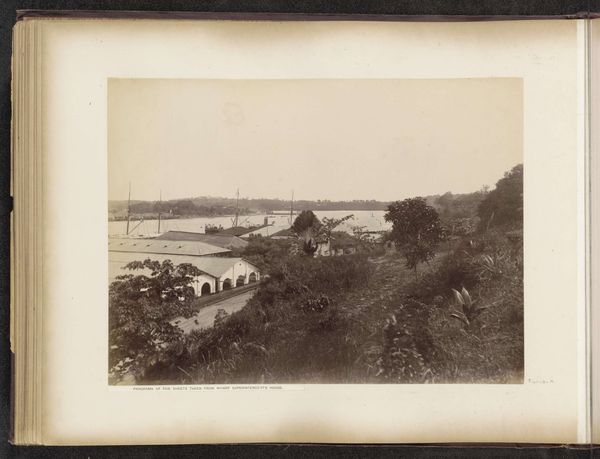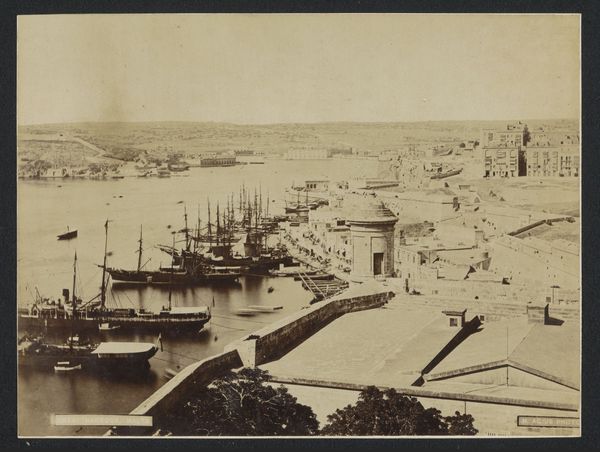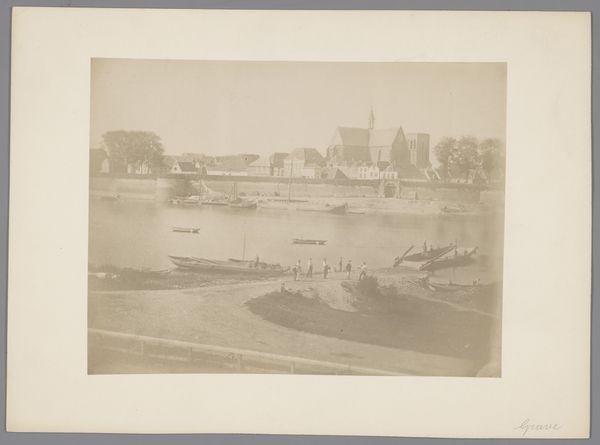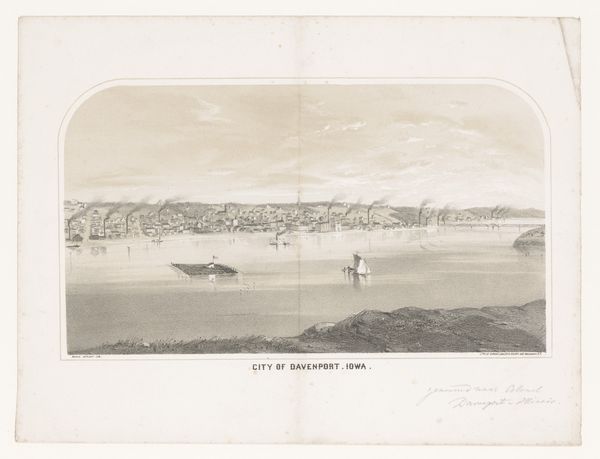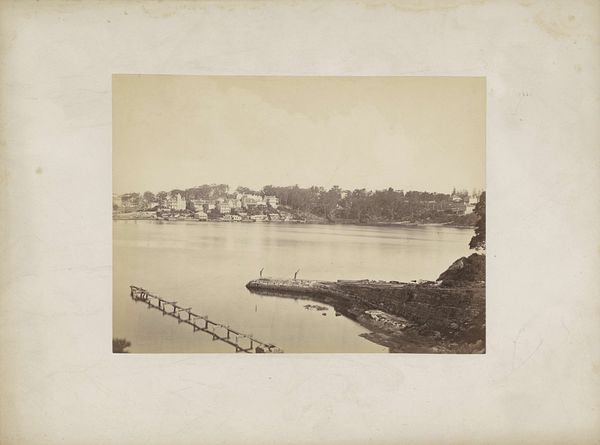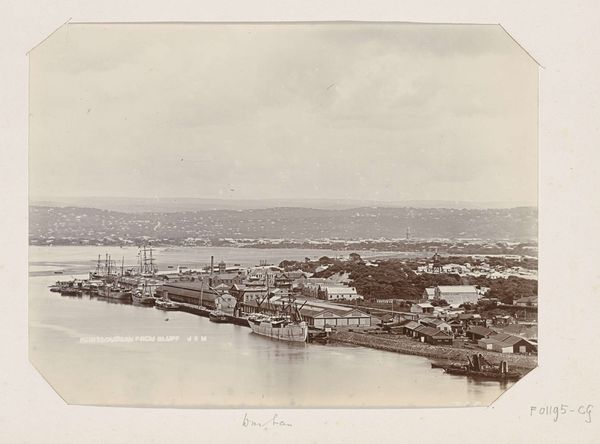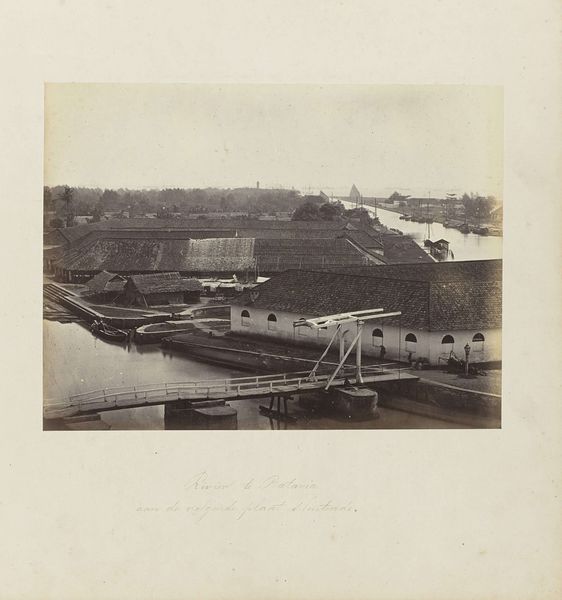
photography, albumen-print
#
16_19th-century
#
landscape
#
photography
#
orientalism
#
cityscape
#
albumen-print
Dimensions: 24.7 x 34.2 cm (9 3/4 x 13 7/16 in.)
Copyright: Public Domain
Editor: Here we have Emile Gsell’s "Vue de Saïgon (Feuille No. 1)," created around 1866. It’s an albumen print, which gives it a lovely sepia tone. I’m immediately struck by how tranquil the scene feels despite being a cityscape. What can you tell us about this work? Curator: What's fascinating here is the intersection of photographic technology, colonial expansion, and the making of "Orientalist" imagery. Albumen printing itself was a complex and demanding process. Understanding its technical aspects – the preparation of the glass plate negative, the coating with albumen, the exposure – reveals a deliberate labor involved in constructing this "view." It's not simply a neutral record. Editor: So, the choice of materials really shaped the final image and its reception? Curator: Absolutely. Think about the consumption of these images back in Europe. They offered a seemingly "objective" view of a colonized landscape, reinforcing notions of Western dominance through the very act of photographing and distributing these prints. The photographic process, combined with Gsell's viewpoint, played a part in defining the relationship between France and Saigon at the time. Also, where and how was it distributed? How does that compare to other similar photographs or visual representations of colonized spaces during that period? Editor: That’s a great point. I hadn't considered how the distribution itself impacted its meaning. It makes me think differently about the intent of the photograph. Curator: Precisely. By looking closely at the material conditions of its creation and consumption, we start to unpack the power dynamics embedded within this seemingly tranquil landscape. We can ask: Who profited from the making and selling of this image? Editor: It really challenges the way we perceive images from this era. Thank you for broadening my understanding! Curator: It also shifts focus to labor as the origin of value of the artwork and not simply as an object to behold aesthetically. This artwork creates opportunities for reinterpretation from new vantage points.
Comments
No comments
Be the first to comment and join the conversation on the ultimate creative platform.


